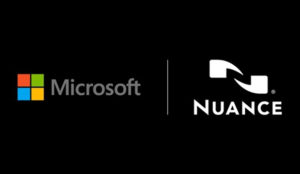
I’ve written a few times in this space about how IT professionals should embrace Software as a Service and the broader cloud computing phenomenon because these Web-based applications and solutions are delivering tangible and measurable business benefits to organizations of all sizes.
IT departments benefit from this trend because it relieves them of many of the hassles associated with implementing and administering traditional, on-premise software and supporting the application end-users. In addition, there is a growing array of SaaS-based management solutions aimed at making it easier and more cost-effective for IT professionals to do their own jobs.
Historically, IT departments have had to contend with costly and complex management systems, such as HP OpenView and IBM Netview, which were as difficult to deploy and utilize as traditional enterprise applications have been on the business side of an organization.
Business units suffered from endless customization efforts that led to most enterprise software rollouts being only partially successful, and the same has been true for many IT departments attempting to implement systems management software. As a result, only limited portions of IT management systems have been installed, and the rest have become shelfware. Keeping the remaining management capabilities up and running has been an ongoing challenge.
Mobile Workforce
Compounding these frustrations has been the transformation of the workplace and consumerization of IT, which have put greater demands on the IT department.
Today, most workers perform all or some of their job functions outside the four walls of a traditional office. They are also increasingly dependent on a widening assortment of personal computers and mobile devices. Supporting these remote and mobile users entails a new set of monitoring and management capabilities that were not taken into consideration when the previous generation of IT management systems were conceived.
Just as traditional, on-premise enterprise applications have been unable to fully satisfy the changing needs of the business end-user and executive, traditional IT management systems have fallen short of meeting today’s requirements.
The “SaaSification” of IT management is taking place in response to these trends. A new generation of Web-oriented, SaaS-based solutions have emerged that are gaining acceptance among organizations of all sizes.
From A to Z
Small and mid-sized businesses are taking advantage of SaaS-based management tools to fill voids these companies couldn’t address in the past because they lacked the IT skills or financial resources to acquire traditional management systems.
Large-scale enterprises are also adopting SaaS-based IT management solutions to address their changing requirements, increase their responsiveness, improve their performance and reduce their costs.
The range of SaaS-based solutions spans every aspect of IT management, including asset, configuration, desktop, network, storage, security and helpdesk. Just like their business user counterparts, IT professionals enjoy the tangible benefits the SaaS-based management systems deliver. These solutions reduce the upfront costs and risks of deployment, accelerate the implementation process, eliminate ongoing support costs and distractions, and provide more flexible, real-time reporting anywhere via the Web.
Now, IT departments that once opposed SaaS adoption by their business users are becoming enthusiastic users themselves. As a result, they are increasingly encouraging their end-users and corporate executives to take advantage of SaaS, as well a growing array of cloud computing alternatives, to achieve their corporate objectives.
This shift in attitude is going to fuel greater growth of the SaaS and cloud computing market.
Jeff Kaplan is the managing director of THINKstrategies and founder of the SaaS Showplace. He can be reached at [email protected].





















































Social Media
See all Social Media